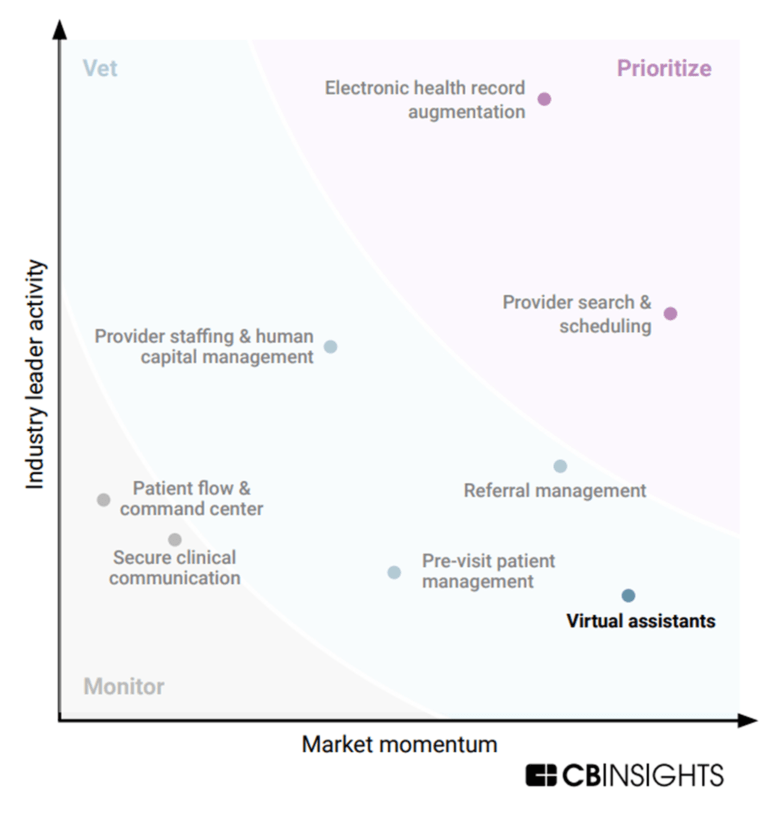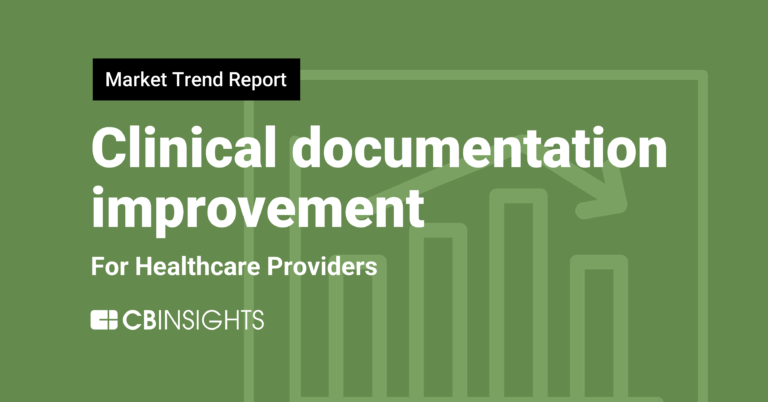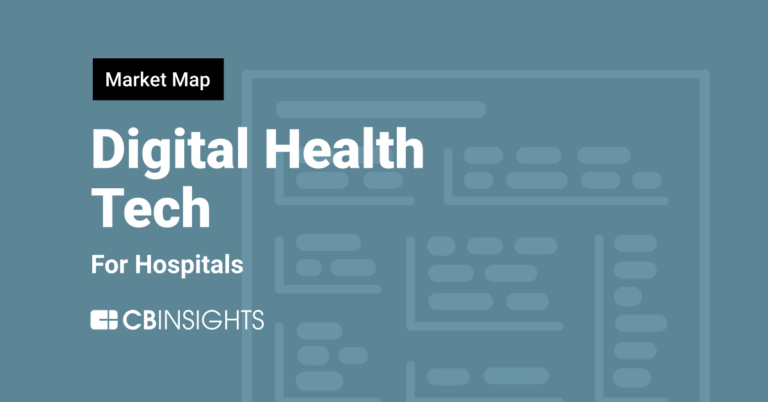
Regard
Founded Year
2017Stage
Series B | AliveTotal Raised
$81.93MValuation
$0000Last Raised
$61M | 9 mos agoMosaic Score The Mosaic Score is an algorithm that measures the overall financial health and market potential of private companies.
+87 points in the past 30 days
About Regard
Regard provides artificial intelligence to automatically review all patient data, diagnose patients, and create documentation for physicians. It integrates technology that directly deals with the hospital system's electronic medical records (EMRs) as a clinical co-pilot. It aims to support complete diagnoses, reduce coding queries, and more. It was formerly known as HealthTensor. The company was founded in 2017 and is based in Los Angeles, California.
Loading...
Regard's Product Videos
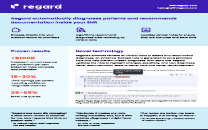
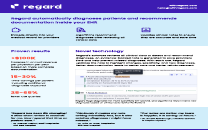
ESPs containing Regard
The ESP matrix leverages data and analyst insight to identify and rank leading companies in a given technology landscape.
The clinical documentation solutions market includes companies leveraging technologies to streamline and improve the process of capturing, organizing, and using patient information. It includes solutions such as ambient documentation platforms that can document patient-clinician interactions, extract relevant medical information, and integrate with electronic health record (EHR) systems. Uses case…
Regard named as Highflier among 15 other companies, including Microsoft, Oracle, and Suki.
Regard's Products & Differentiators
Regard Co-Pilot
Integrates directly in the electronic health record (EHR) and helps mine the EHR for relevant medical information, surfacing data to help recommend diagnoses to physicians. Regard then suggests information to be added to the medical note, saving the physician time from writing the note from scratch and improving hospital finances.
Loading...
Research containing Regard
Get data-driven expert analysis from the CB Insights Intelligence Unit.
CB Insights Intelligence Analysts have mentioned Regard in 9 CB Insights research briefs, most recently on Mar 11, 2025.

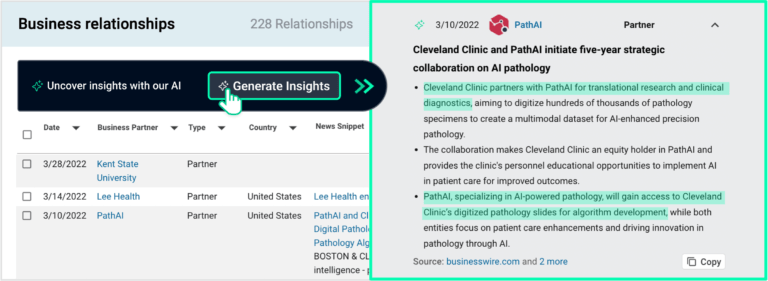
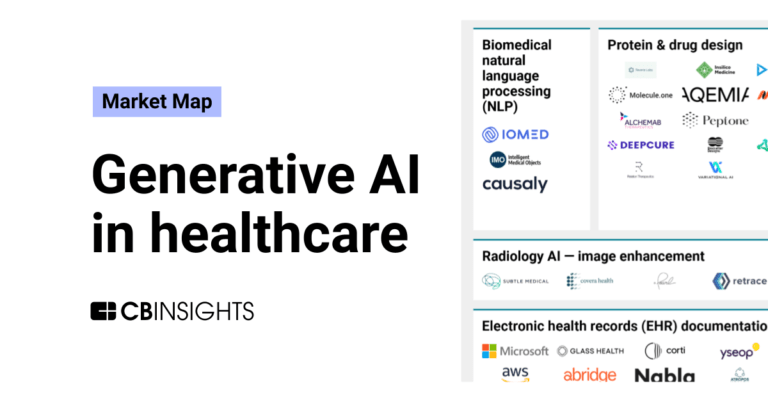
Jan 11, 2024
The generative AI in healthcare market map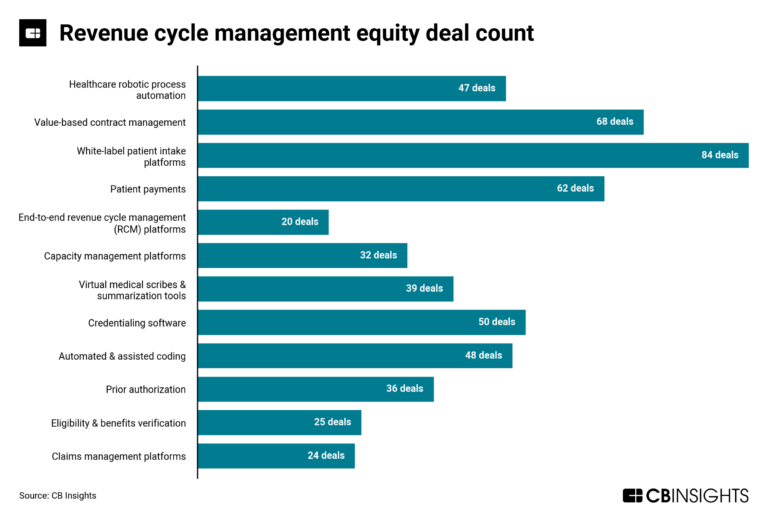
Sep 22, 2023
The revenue cycle management market mapExpert Collections containing Regard
Expert Collections are analyst-curated lists that highlight the companies you need to know in the most important technology spaces.
Regard is included in 5 Expert Collections, including Digital Health.
Digital Health
11,305 items
The digital health collection includes vendors developing software, platforms, sensor & robotic hardware, health data infrastructure, and tech-enabled services in healthcare. The list excludes pureplay pharma/biopharma, sequencing instruments, gene editing, and assistive tech.
Generative AI
1,299 items
Companies working on generative AI applications and infrastructure.
Artificial Intelligence
7,221 items
Digital Health 50
50 items
AI Agents & Copilots Market Map (August 2024)
322 items
Corresponds to the Enterprise AI Agents & Copilots Market Map: https://app.cbinsights.com/research/enterprise-ai-agents-copilots-market-map/
Regard Patents
Regard has filed 2 patents.
The 3 most popular patent topics include:
- electronic health records
- health informatics
- health standards
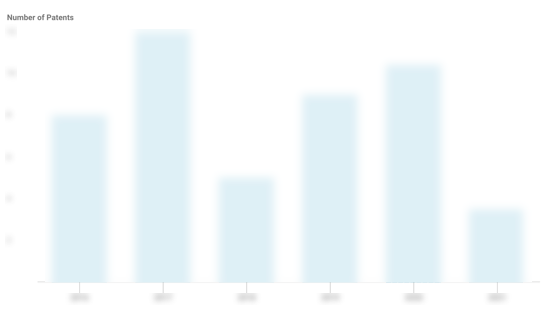
Application Date | Grant Date | Title | Related Topics | Status |
|---|---|---|---|---|
3/8/2022 | 12/6/2022 | Health informatics, Electronic health records, Software architecture, Telehealth, Health standards | Grant |
Application Date | 3/8/2022 |
|---|---|
Grant Date | 12/6/2022 |
Title | |
Related Topics | Health informatics, Electronic health records, Software architecture, Telehealth, Health standards |
Status | Grant |
Latest Regard News
Feb 13, 2025
Spencer Dorn is a gastroenterologist who covers healthcare and tech. getty Imagine a 1990s endocrinologist seeing a new patient in her clinic. First, she reviews the referral letter the PCP faxed over and glances at the patient's intake form. She then enters the exam room, interviews and examines the patient, and develops a plan. After leaving the room, she scribbles a few sentences on lined looseleaf paper and then checks a few boxes on the order and billing forms. Her office staff files her note in a paper chart, faxes the orders to the lab, and mails the claim to the insurer. Times have changed. In 2025, the same (now older) endocrinologist spends two hours the evening before her clinic identifying and documenting relevant information scattered across her next day’s patients' long medical records. The following morning, while waiting for her staff to upload her first patient's glucometer data, she glances at her overloaded EHR inbox, rushing to respond to a patient portal message, approve two new refill requests, and answer a coding query. When the patient is ready, she walks into the room, introduces herself, and listens to his story, frequently toggling between screens to verify certain information, such as the stress test he mentions having had a few weeks earlier at a neighboring health system. MORE FOR YOU At the end of the visit, she outlines a plan, enters a few orders, selects billing and diagnosis codes, and clicks through an irrelevant decision support popup she's learned to ignore. Already running 15 minutes late, she thinks about retirement, grateful that at least her new AI scribe will write most of her note. Drowning In Information But Starved For Knowledge John Naisbitt's decades-old forecast has come true; all healthcare workers—including physicians like me—are "drowning in information but starved for knowledge." The average hospital produces 50 petabytes of data each year, the equivalent of streaming a two-hour movie 25 million times. The typical medical record exceeds half the word count of Hamlet, Shakespeare's longest-written work. Most notes are bloated with redundant information, and some are barely intelligible. So, we repeatedly point, click, toggle, scan, and search for a few needles of relevant information in a giant data haystack. We simultaneously type, click, copy, and paste, capturing more details and adding digital exhaust. This work steals our attention, takes our time, and zaps our energy. We sometimes miss (or misinterpret) important information, leading to worse decisions and letting patients slip through the cracks. We desperately need help. AI can help us manage this information tsunami more effectively and efficiently. Let me explain how. How AI Generates Summaries There are various approaches to generating AI summaries. Most involve the following key steps: Ingest raw data from diverse sources (EHRs, health information exchanges, images, ambient scribes, insurance claims, biosensors, and more). Process the data by cleaning, normalizing, structuring, and classifying it. Search for and identify the most relevant data for the given task and scenario. Filter out duplicate, outdated data. Generate a coherent summary. Display the summary in the right part of the workflow, preferably linking to the sources. The underlying technologies may include natural language processing, RAG search, predictive models, heuristics, clinical knowledge graphs, adversarial detection systems, and human-in-the-loop escalation systems. "Medicine is fundamentally an information- and data-processing discipline." Zak Kohane, MD, PhD AI Summarization Will Touch Nearly All Healthcare Workflows As Harvard informaticist Dr. Zak Kohane explains, "Medicine is fundamentally an information- and data-processing discipline." All healthcare workers—including pediatric surgeons, physical therapists, inpatient nurses, care managers, and call center employees—repeatedly gather, summarize, and process information to make decisions and document their activities. Many technology companies and healthcare organizations are partnering to weave summarization into various clinical and administrative workflows. Most obviously, AI summaries can help clinicians quickly learn about their patients, whether it's a PCP seeing a patient for the first time in months, a cardiologist performing a consultation, an anesthesiologist preparing for a case, a radiologist interpreting a CT scan, or an emergency medicine physician starting their shift. For example, Navina's AI assistant patient summaries reduce family physicians' time preparing for visits by one-third. AI summaries may surface key insights, support clinical reasoning, recommend diagnosis and billing codes, and identify care gaps, such as highlighting that a patient with a new cardiac stent is not on Plavix or that an older woman is due for her DEXA scan. Summaries can also speed up documentation by generating text for referral letters, discharge summaries, nurse end-of-shift notes, and clinicians’ notes. For instance, Regard reports that its inpatient Clinical Insights Platform users spend 25% less time writing notes and capture nearly 20% more complications and comorbidity codes. Importantly, these tools are not just for clinicians and nurses. Tailored AI summaries could help administrative staff process referrals, schedule appointments, and manage incoming calls. Patty Hayward, Talkdesk's Healthcare GM, told me her company's auto-summarization tool cuts call center handle times by 15%. AI summaries can also help teams process insurance prior authorization requests, handle denials, and meet utilization management requirements. They may also speed quality reporting and submissions to data registries, such as the AHA Stroke Registry. For example, Layer Health reports decreasing registry submission times by two-thirds. Generating Trustworthy AI Summaries Is Challenging High-quality summaries are accurate, clear, and logical. They are comprehensive yet succinct. They are trustworthy. Techniques such as retrieval augmented generation, grounding, and attribution help eliminate the type of flagrant hallucinations seen with other AI products. Still, more subtle errors—such as adding an extra word (e.g., "fever") to a summary that did not exist in the source—may impact meaning. An emerging best practice is to make summaries "traceable," enabling users to reference the primary summary sources quickly. Omitting key facts and details may be even more problematic. Without reading the entire record, users cannot know if important information is missing or if a summary prioritizes the most relevant facts in the correct chronological order. Several factors make this particularly challenging. For one, medical and administrative records are messy, bogged down with redundant information, and littered with misspellings, copy-paste errors, and various acronyms. But "garbage in, garbage out" is not an acceptable excuse for a low-quality summary. A common approach is to use knowledge graphs to ensure that summarized information is consistent with known clinical knowledge. Second, the volume of information within records typically far exceeds large language models' context windows. Abstractive Health's Vince Hartman explained, "Simply feeding an entire medical record into a model yields inaccurate summaries." Instead, his company uses a "chunking strategy," coherently summarizing individual components of the record before combining them into one overall summary. Third, there usually is no right " answer " for what information to include in a summary and where to include it. For example, when briefly summarizing a hospitalization for urinary retention, is it relevant to mention the patient's history of depression? Summarization – like medicine more broadly – blends science and art. Layer Health CEO and MIT Professor David Sontag believes the best way to validate and monitor summaries is through the lens of accuracy on a pre-determined set of specific questions. This helped to inform the company's decision to focus its first product on automating submissions to clinical registries with pre-specified data requirements. Meanwhile, Eli Ben-Joseph, CEO of Regard, invokes the " Swiss Cheese Model " of safety, where multiple technical checks and clinicians "in the loop" combine to maximize accuracy and minimize risk. The company Pieces accomplishes this by passing its clinical summaries through an adversarial AI model that flags possible errors. A Pieces-employed physician then reviews and potentially adjudicates flagged summaries before they reach frontline clinicians. The company analyzed 5+ million of its AI-generated inpatient summaries and found the rate of severe hallucinations was exceedingly low (0.4 – 10.7 per 100,000 summaries). Example of a Pieces Working Summary for a hypothetical inpatient with a complicated hospital course. Pieces AI Summarization Tools Will Span Use Cases And Converge With Other Technologies So far, most companies generate AI summaries for just one or a few specific use cases, such as pre-charting, coding, or closing care gaps. Expect many to start supporting multiple users and use cases. For example, Dr. Kalie Dove-Maguire, Chief Product Officer at Evidently, explained that her company is building a "clinical intelligence platform flexible enough to support users across a health system," including schedulers, coders, nurses, and clinicians. I was impressed by what she showed me. Similarly, Regard's Clinical Insight Platform supports several tasks across hospitalists' workflows, including recommending care plans, speeding clinical documentation, and surfacing diagnoses that determine risk scores and reimbursement. AI summaries will increasingly converge with other AI tools, most obviously AI scribes , which effectively turn conversations into notes. However, only one-third of clinical note text derives from conversations. Summarization tools can capture the remaining two-thirds of note text deriving from other parts of the medical record. Combining summarization with tools that synthesize clinical evidence and support clinical decisions may be especially impactful. AvoMD's comprehensive AI assistant summarizes the medical record, writes notes, and supports coding while linking to clinical pathways and evidence. Avo's CEO, Dr. Yair Saperstein, envisions summaries soon crossing into agentic workflows. The risk is that "a single breakpoint could cause all future steps to break down." A holy grail is enabling clinicians and other healthcare workers to dynamically query the EHR, asking questions such as "What was the indication for the 2021 nuclear stress test?" or "Why was the Eliquis discontinued?" Here, a key challenge will be reducing latency (i.e., the seconds to minutes of processing time). Pieces CEO Dr. Ruben Amarsingham showed me how his company is pioneering an approach of refining each patient's record into a "distillate" that users can query instantaneously. It reminded me of William Gibson’s famous quote: “The future is already here – it’s just not evenly distributed.” Elion's AI Clinical Summaries Market Map Elion Features Or Products? As tech analyst Benedict Evans explained , incumbents try to make new technologies a feature, whereas startups try to use new technology to unbundle the incumbents. We are already seeing this dynamic play out with AI summaries. Elion's market map includes more than two dozen startups building clinical summarization tools. Some AI scribe companies, like Ambience and Nabla, are also working on summarization. But, whereas Epic—which dominates the health system and hospital EHR market—sought partnerships for AI scribes, it is fully leaning into building AI summarization. Epic's Senior Vice President of R&D, Seth Hain, told me, "Epic's core mission has always been providing an in-context view of information so clinicians, nurses, staff, and patients can make better decisions. We see AI-based summarization as the continued extension of this focus." As such, the company is developing context-aware summaries across its various clinical and administrative applications. Dr. Chris Mast, VP of Clinical Informatics, added, "By delivering consistent user experiences and citations to the underlying information sources, we are building summarization tools users can trust." Startups argue they can outcompete Epic and other EHR vendors on quality and usability. One company CEO, who wished to remain anonymous, compared EHR vendor summaries to “instant coffee,” whereas their company’s summaries are like “fine lattes purposely brewed for each user in their specific setting.” Still, it is unclear whether that would overcome EHRs' built-in advantages. While Epic (and other EHRs) must make information available to outside developers, Brendan Keeler (aka the Health API Guy ) believes that "Epic has a decisive long-term advantage because it owns all the inputs and outputs and understands its data structure better than any third party ever could." Similar dynamics exist in the highly fragmented small/mid-sized practice markets, where startups like Abstractive, Avo, and Navina are expanding. Some EHR vendors may hold the pole position here, too. Canvas Medical CTO Andrew Hines explained, "EHRs will build summarization capabilities if the rate of return is high enough. Otherwise, they will let third-party developers handle it." The Changing Nature of Work AI summaries will soon spread throughout healthcare, helping clinicians and other healthcare workers work more effectively, efficiently, and sustainably. Still, there will be side effects, just as we experienced with EHRs . We must remain clear-eyed. Will continually compressing and expanding information degrade the system of record? Dr. Hugh Harvey, a leading voice on healthcare AI regulation, worries that "the systemic risk of multiple undetected hallucinations across thousands/millions of clinical records could dangerously compound over time and create chaos across an EHR." A counterpoint is that EHRs are already so polluted that AI is the only way out. How high should we set the bar? While AI will never create perfect summaries, physicians and other healthcare workers are imperfect summarizers, too. How do we balance efficiency and quality? AI that distills information too finely will strip away necessary context. How can we cultivate enough awareness to know when we can—and cannot—rely on AI summaries alone? Though it may be tedious, summarizing information is not always just busy work; it often helps us better understand our patients. As Tim Wu warned in a 2014 essay , "Convenience technologies supposedly free us to focus on what matters, but sometimes the part that matters is what gets eliminated." Will we have enough discipline to dig deeper when necessary? Acknowledgment: I thank Ruben Amarasingham, Anne Belkin-Amario, Kalie Dove-Maguire, Seth Hain, Vince Hartman, Hugh Harvey, Patty Hayward, Andrew Hines, Brendan Keeler, Alex LeBrun, Chris Mast, Dana Naim, Feng Niu, Yair Saperstein, David Sontag, Patrick Wingo, and Jared Wright for discussing this topic with me. Follow me on LinkedIn .
Regard Frequently Asked Questions (FAQ)
When was Regard founded?
Regard was founded in 2017.
Where is Regard's headquarters?
Regard's headquarters is located at 4133 Redwood Avenue, Los Angeles.
What is Regard's latest funding round?
Regard's latest funding round is Series B.
How much did Regard raise?
Regard raised a total of $81.93M.
Who are the investors of Regard?
Investors of Regard include TenOneTen Ventures, Calibrate Ventures, Techstars, Oak HC/FT Partners, Cedars-Sinai Health Ventures and 15 more.
Who are Regard's competitors?
Competitors of Regard include Pieces and 4 more.
What products does Regard offer?
Regard's products include Regard Co-Pilot.
Who are Regard's customers?
Customers of Regard include Torrence Memorial Medical Center (TMMC).
Loading...
Compare Regard to Competitors

Tali AI specializes in artificial intelligence solutions for the healthcare sector, focusing on reducing the administrative burden for physicians. The company offers AI ambient scribe and medical dictation software that automatically generates clinical documentation and integrates seamlessly with various electronic health record (EHR) systems. Tali AI's products are designed to improve clinical documentation efficiency and support healthcare providers by handling administrative tasks securely and compliantly. It was founded in 2020 and is based in Toronto, Canada.

DeepScribe specializes in AI-powered clinical documentation within the healthcare sector. The company offers an ambient AI platform that transforms patient conversations into comprehensive, accurate medical notes, automating the documentation process for clinicians. DeepScribe primarily serves healthcare providers, ranging from small private practices to large healthcare organizations. It was founded in 2017 and is based in San Francisco, California.

Abridge works with generative artificial intelligence (AI) for clinical conversations within the healthcare sector. The platform converts patient-clinician conversations into structured clinical notes in real time, which supports documentation for healthcare providers. Abridge serves the healthcare technology industry and focuses on clinician experiences and healthcare documentation. Abridge was formerly known as Intelligible AI. It was founded in 2018 and is based in Pittsburgh, Pennsylvania.

Nabla specializes in ambient artificial intelligence (AI) assistants that assist with clinician documentation. Their service includes automating clinical documentation by generating real-time, structured clinical notes that integrate into electronic health records (EHR) and aim to reduce the time physicians spend on documentation. Nabla's systems are utilized across various healthcare specialties and settings, offering templates and supporting a range of clinical workflows. It was founded in 2018 and is based in Paris, France.

Playback Health provides AI-based healthcare solutions, focusing on clinical documentation and communication in the healthcare sector. The company has an AI medical scribe that employs ambient listening technology to automate clinical documentation and facilitate communication. Playback Health serves the healthcare industry and integrates with electronic medical records (EMR) systems to assist clinicians. It was founded in 2018 and is based in Long Island City, New York.
Autoscriber is a company that focuses on automating medical note-taking in the healthcare industry. The company's main service involves using artificial intelligence to convert conversations between healthcare professionals and patients into structured summaries, thereby reducing the administrative burden on medical professionals. Autoscriber primarily sells to the healthcare industry. It was founded in 2020 and is based in Eindhoven, Netherlands.
Loading...


